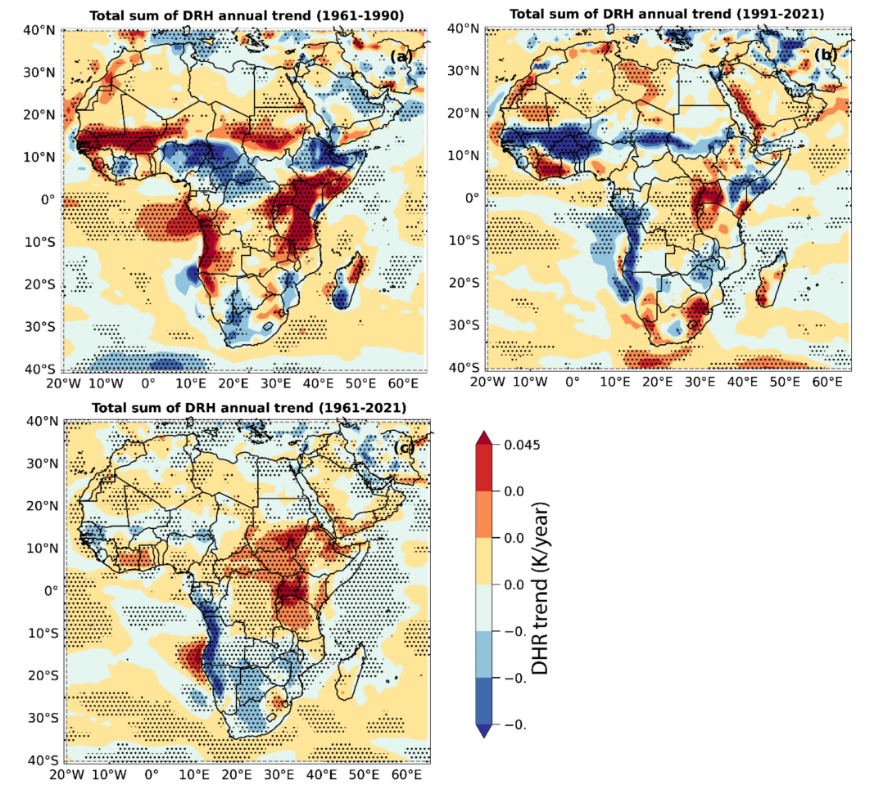
This study examines the long-term variation of the annual occurrence frequency for the Persistent Hot spell Events (PHEs) over the African continent and the underlying mechanisms using the Japanese 55-year Reanalysis (JRA-55) daily dataset for the period 1961–2021.
We applied criterion for periods when the daily standardized anomaly index (SAI) value of mean daily temperature is larger than 0.8 for at least 3 consecutive days to identified PHEs.
The nonparametric Mann–Kendall trend test revealed that Eastern, Northern and Western regions of Africa exhibited significant increasing trends in PHEs. Furthermore, both Eastern and Western Africa were characterized by an increasing rate of 3 numbers/decade for the PHEs frequency, while Northern Africa was characterized by an increase of 1.5 numbers/decade.
The trends in the PHEs frequency over Eastern, Northern and Western regions showed linear positive association with global Sea surface temperature (SST), implying an important role of global warming effect on PHE trends.
In contrast, PHEs over Southern Africa exhibited an evident decadal variation and were positively correlated with the SST over the Pacific Ocean. This study has also noted that, the Southern Africa exhibited an increase in PHEs from 1982 to 2000 while a decrease from 2001 to 2021.
Additionally, adiabatic and diabatic thermodynamic processes were utilized to analyze the impact of surface convection and large-scale synoptic processes on regional PHE trends.
The results revealed that the variation in adiabatic and diabatic processes were important contributors to the observed decadal variation in regional PHEs frequency especially over Southern Africa.
Ekwacu, S., Kisembe, J., Ogwang, B.A. et al. (2025). Long-term spatiotemporal variation in frequency of persistent hot spell events over Africa. Theoretical and Applied Climatology 156, 237.